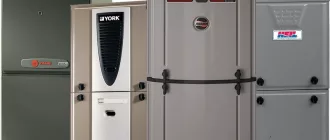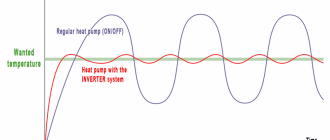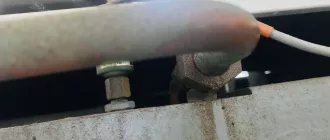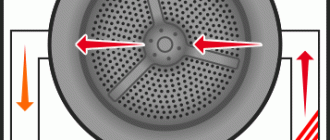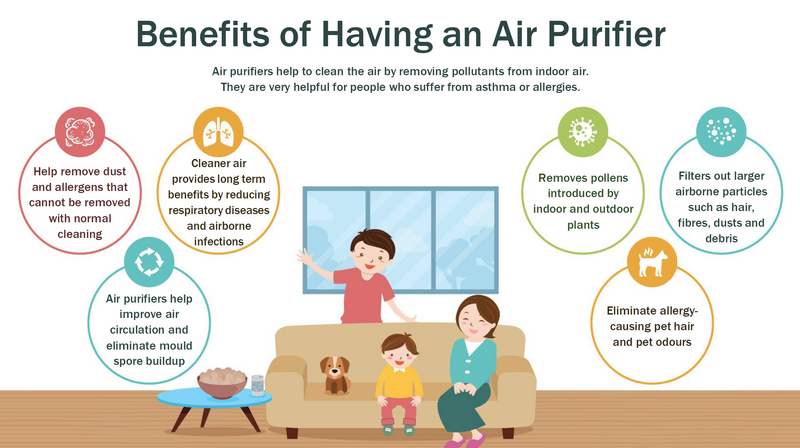
Struggling with Allergies? Enhance the Air Quality in Your Home for Relief!
If you suffer from allergies, you know how important it is to create a clean and healthy living environment. One way to achieve this is by improving your home’s indoor air quality. Indoor air can be even more polluted than outdoor air, and poor air quality can exacerbate allergy symptoms and lead to respiratory problems. By taking steps to improve your home’s indoor air quality, you can create a space that is comfortable and safe for everyone.
There are several ways to improve indoor air quality. One of the simplest and most effective methods is to regularly clean and vacuum your home. Dust, pet dander, and other allergens can accumulate on surfaces and in carpets, so it’s important to keep them clean. Additionally, using air purifiers and filters can help remove pollutants from the air. These devices trap and eliminate particles such as dust, pollen, and mold spores, improving the overall air quality in your home.
Another important step you can take is to control moisture in your home. Excess moisture can create the perfect breeding ground for mold and mildew, which can trigger allergies and respiratory problems. Make sure to repair any leaks in your home and use dehumidifiers in damp areas such as basements or bathrooms. Additionally, regularly changing your air conditioner and furnace filters can prevent them from becoming clogged with allergens and other debris.
Don’t forget about the power of plants! Adding indoor plants to your home not only adds natural beauty, but they can also help improve air quality. Plants absorb carbon dioxide and release oxygen, helping to purify the air. Some plants, such as peace lilies and spider plants, are known for their ability to remove toxins from the air, making them a great addition to your home.
By taking these steps to improve your home’s indoor air quality, you can create a healthier and more comfortable living environment for you and your family. Remember to regularly clean, use air purifiers, control moisture, and consider adding some plants to help purify the air. Your allergies will thank you!
Common Indoor Allergens to Be Aware Of
Improving the air quality in your home can be crucial when it comes to managing allergies and their symptoms. By taking steps to reduce the presence of common indoor allergens, you can create a healthier environment for yourself and your family. Here are some of the most common indoor allergens to be aware of:
- Dust mites: These microscopic creatures thrive in warm and humid environments. They can be found in bedding, upholstery, and carpeting. Regularly washing bedding in hot water and using allergen-proof covers can help reduce dust mite exposure.
- Pet dander: If you have pets at home, their dander can trigger allergic reactions. Regularly grooming and bathing your pets, as well as keeping them out of bedrooms and off furniture, can help minimize exposure.
- Mold: Mold tends to thrive in moist areas such as bathrooms and basements. Keeping these areas clean and well-ventilated can help prevent mold growth. If you spot any mold, it’s important to remove it promptly.
- Pollen: While pollen is typically associated with outdoor allergies, it can also find its way indoors through open doors and windows. Using air purifiers with HEPA filters can help capture pollen particles and improve indoor air quality.
- Cockroaches: These pests can leave behind droppings and shed skin that can trigger allergies. Maintaining a clean and clutter-free home, sealing cracks and crevices, and fixing any leaks can help prevent cockroach infestations.
- Smoke: Whether from cigarettes or wood-burning fireplaces, smoke can worsen allergies and irritate the respiratory system. Avoid smoking indoors and opt for electric or gas-powered alternatives instead.
By being aware of these common indoor allergens and taking steps to minimize their presence, you can create a healthier and more comfortable living environment for yourself and your loved ones.
The Impact of Poor Indoor Air Quality on Allergies
Poor indoor air quality can have a significant impact on allergies. The quality of the air inside our homes can directly affect our respiratory health, particularly for individuals who suffer from allergies.
Allergies are the body’s immune system response to a particular substance, such as dust mites, pollen, pet dander, or mold. When these allergens are present in the air, they can trigger symptoms like sneezing, coughing, watery eyes, and a runny nose.
When the air quality in our homes is poor, it means that it contains a high concentration of these allergens. This can exacerbate allergy symptoms and make them more severe and frequent.
One of the main causes of poor indoor air quality is inadequate ventilation. When the air circulation in our homes is insufficient, allergens can become trapped indoors, leading to a buildup. Additionally, pollutants from sources like cleaning products, tobacco smoke, and even certain building materials can contribute to poor air quality and worsen allergies.
To improve indoor air quality and reduce allergy symptoms, there are several steps you can take. Regularly cleaning and dusting your home can help to remove allergens from surfaces. It’s also a good idea to wash bedding and curtains frequently to minimize allergen buildup. Using high-quality air filters in your HVAC system can help to remove allergens from the air, while also ensuring proper ventilation.
In conclusion, poor indoor air quality can have a detrimental effect on allergies. By taking steps to improve the air quality in our homes, we can minimize allergen exposure and alleviate allergy symptoms. Investing in good ventilation and taking regular maintenance measures can go a long way in creating a healthier indoor environment.
How to Identify if Your Home’s Air Quality is Poor
Improving the indoor air quality in your home is essential for preventing allergies and maintaining a healthy living environment. But how can you tell if the air quality in your home is poor?
One of the first signs of poor air quality is increased allergy symptoms. If you or your family members are experiencing more frequent sneezing, coughing, or itchy eyes, it could be a sign that the indoor air is filled with allergens such as dust, pet dander, or pollen.
Another indicator of poor air quality is the presence of unpleasant odors. If you notice persistent musty, moldy, or stale smells in your home, it may be a sign that there is mold or mildew growth, or that there are chemicals and pollutants present in the air.
Excessive dust accumulation is also a clear sign of poor air quality. If you find yourself needing to dust more frequently and notice visible dust on surfaces, it indicates that there are high levels of particles circulating in the air.
If you or your family members are experiencing unexplained symptoms like frequent headaches, fatigue, or difficulty breathing, it’s important to consider the air quality as a potential cause. Poor indoor air quality can have a significant impact on your overall health and well-being.
Finally, you can conduct a simple visual inspection to check for signs of poor air quality. Look for signs of moisture or water damage, as this can contribute to mold growth and poor air circulation. Additionally, inspect your HVAC system to ensure it is clean and functioning properly, as a poorly maintained system can lead to decreased air quality.
By identifying these signs of poor air quality, you can take steps to improve the indoor air in your home. Regular cleaning, proper ventilation, and utilizing air purifiers or filters can help remove allergens and pollutants, resulting in cleaner and healthier air for you and your family.
Simple Steps to Improve Your Home’s Indoor Air Quality
Improving your home’s indoor air quality is essential for reducing allergies and keeping your family healthy. Here are some simple steps you can take:
1. Keep Your Home Clean: Regularly vacuum and dust your home to remove dust, pollen, and pet dander that can trigger allergies. Clean your bedding and curtains frequently as well.
2. Control Humidity: Use a dehumidifier to reduce excess moisture in your home, as mold and dust mites thrive in humid environments. Keep the humidity level below 50% to prevent their growth.
3. Ventilate: Proper ventilation is crucial for maintaining good indoor air quality. Open windows and use exhaust fans in your kitchen and bathroom to remove pollutants and keep the air fresh.
4. Change Air Filters: Regularly change the filters in your HVAC system to trap allergens and improve air quality. Consider using high-efficiency filters to capture smaller particles.
5. Use Natural Cleaning Products: Avoid using harsh chemicals in your home as they can release harmful fumes. Opt for natural cleaning products that are healthier for you and the environment.
6. Remove Indoor Plants: While plants can enhance the appearance of your home, they can also contribute to indoor allergens. If you have allergies, consider removing or limiting the number of plants indoors.
7. Keep Pets Clean: Regularly groom your pets to minimize shedding and dander. Also, keep them out of bedrooms and off furniture to reduce allergens in those areas.
8. Avoid Smoking Indoors: Smoking indoors releases harmful chemicals and pollutants into the air. If you smoke, it’s important to do so outside to protect your indoor air quality.
By following these simple steps, you can significantly improve your home’s indoor air quality and create a healthier living environment for you and your family.
The Importance of Regular Cleaning and Dusting
Regular cleaning and dusting play a crucial role in improving indoor air quality and reducing the risk of allergies. Dust is a common allergen that can trigger allergic reactions, such as sneezing, itchy eyes, and congestion. By regularly cleaning and dusting your home, you can minimize the presence of dust and allergens in the air, creating a healthier living environment.
When dust accumulates on surfaces, it can become a breeding ground for dust mites. These tiny creatures thrive in warm and humid environments and feed on dead skin cells. Dust mites are a common trigger for allergies and asthma. By regularly cleaning and dusting surfaces, you can remove dust mite residues and reduce the risk of allergic reactions.
Regular cleaning and dusting also help to remove other indoor pollutants, such as pet dander, pollen, and mold spores. These allergens can be carried into the home through open windows, on clothing, or by pets. By dusting surfaces, vacuuming carpets, and cleaning upholstery, you can remove these allergens and improve the overall air quality in your home.
In addition to improving air quality, regular cleaning and dusting can also eliminate unpleasant odors. Dust and dirt can trap odors, making your home smell musty or stale. By regularly cleaning and dusting, you can remove these odor-causing particles and create a fresher and more inviting living space.
It is important to establish a regular cleaning routine to ensure that your home remains clean and allergen-free. Dusting should be done at least once a week, or more frequently in high-traffic areas or if you have pets. Vacuuming carpets and rugs should also be done on a regular basis to remove embedded dirt and allergens.
By prioritizing regular cleaning and dusting, you can significantly improve the indoor air quality in your home, reducing the risk of allergies and creating a healthier living environment for you and your family.
Choosing the Right Air Filters for Your HVAC System
Having quality air filters is essential for improving the indoor air quality in your home and reducing allergies. The right air filters can effectively capture and remove allergens and pollutants, ensuring that the air you breathe is clean and healthy.
When choosing air filters for your HVAC system, there are a few factors to consider. Firstly, consider the MERV rating (Minimum Efficiency Reporting Value) of the filter. The higher the MERV rating, the more efficient the filter is at capturing smaller particles. If you or your family members suffer from severe allergies or respiratory conditions, it is recommended to choose a filter with a higher MERV rating.
Another factor to consider is the type of filter material. There are different types of filter materials available, such as fiberglass, pleated, and electrostatic filters. Fiberglass filters are the most basic and are typically used in residential settings. Pleated filters have a larger surface area and are more effective at capturing small particles. Electrostatic filters use static electricity to attract and trap particles, making them highly efficient.
It is also important to consider the size of the filter. The filter should fit properly in your HVAC system, without any gaps or air leaks around the edges. Most HVAC systems have filters that are 1-inch thick, but there are also systems that require thicker filters. Make sure to check the specifications of your HVAC system to determine the appropriate filter size.
Lastly, consider the cost and maintenance requirements of the filter. Higher MERV rated filters and specialized filter materials may be more expensive, but they can provide better filtration. However, keep in mind that higher efficiency filters may also require more frequent replacement or cleaning. It is important to follow the manufacturer’s recommendations for filter replacement to ensure optimal performance.
In conclusion, choosing the right air filters for your HVAC system is crucial for maintaining good indoor air quality and reducing allergies. Consider factors such as MERV rating, filter material, size, cost, and maintenance requirements when making your decision. By selecting the appropriate air filters, you can create a healthier and more comfortable living environment for you and your family.
How to Properly Ventilate Your Home
Proper ventilation is essential for maintaining good indoor air quality in your home. By improving the air circulation, you can reduce the presence of allergens and improve the overall health of your family.
Here are a few tips to help you properly ventilate your home:
1. Open Windows: Opening windows is a simple and effective way to let fresh air in and remove stale air. This can help improve the air quality in your home.
2. Use Exhaust Fans: Utilize exhaust fans in areas prone to moisture buildup, such as the kitchen and bathroom. These fans can help remove excess humidity and prevent the growth of mold and mildew.
3. Install Ventilation Systems: Consider installing a whole-house ventilation system or a heat recovery ventilator (HRV). These systems help bring fresh air into your home while expelling stale air.
4. Control Indoor Pollutants: Be mindful of indoor pollutants such as cleaning products, smoking, and pet dander. Proper ventilation can help dilute and remove these pollutants from the air.
5. Maintain HVAC Systems: Regularly clean and maintain your heating, ventilation, and air conditioning (HVAC) systems. Clogged filters and ducts can restrict airflow and reduce the effectiveness of ventilation.

By following these tips, you can improve the air quality in your home and create a healthier living environment for you and your family.
The Benefits of Air Purifiers for Allergy Sufferers
Air purifiers can greatly improve the air quality in your home, especially for those who suffer from allergies. Allergens such as pollen, dust mites, pet dander, and mold spores can easily find their way into your home’s air, triggering allergic reactions and making it difficult to breathe.
An air purifier works by filtering out these allergens, ensuring that the air you and your family breathe is clean and free of irritants. This can provide relief to allergy sufferers and help improve their overall quality of life.
By removing allergens from the air, air purifiers can reduce the symptoms of allergies, such as sneezing, coughing, watery eyes, and congestion. This can make it easier for allergy sufferers to sleep better at night and function better during the day.
Not only do air purifiers eliminate allergens, but they also help to remove other pollutants from the air, such as smoke, odors, and harmful chemicals. This can create a healthier and more pleasant environment in your home.
When choosing an air purifier, look for one with a high-efficiency particulate air (HEPA) filter. HEPA filters are designed to trap even the smallest particles, providing maximum allergy relief. Additionally, consider the size of the room where you plan to use the air purifier, as different models have different coverage areas.
In conclusion, air purifiers offer numerous benefits to allergy sufferers by improving the air quality in their homes. With the ability to remove allergens and other pollutants, these devices can provide relief from allergies and create a healthier living space.
Minimizing and Controlling Humidity Levels
Humidity can have a significant impact on the air quality inside your home. High humidity can lead to the growth of mold and mildew, which can trigger allergies and respiratory issues. On the other hand, low humidity can cause dryness in the air and may exacerbate respiratory conditions.
To improve your home’s indoor air quality, it is important to minimize and control humidity levels. Here are some tips to help you achieve this:
1. Use a dehumidifier: A dehumidifier is a device that removes excess moisture from the air. It can be particularly useful in areas of your home that tend to be more humid, such as the basement or bathroom. By reducing humidity levels, you can prevent the growth of mold and mildew.
2. Ventilate your home: Proper ventilation is crucial in maintaining optimal humidity levels. Make sure your home has adequate ventilation, especially in areas prone to moisture build-up, like the kitchen and bathroom. Opening windows and using exhaust fans can help remove excess moisture and improve air circulation.
3. Fix leaks and address water issues: Moisture problems can arise from leaks or water intrusion. Inspect your home for any signs of water damage and fix them promptly. This includes repairing leaking pipes, sealing cracks, and ensuring proper drainage around your home.
4. Monitor indoor humidity levels: Invest in a hygrometer, a device that measures humidity levels in your home. The ideal humidity range is between 30-50%. If the humidity level is consistently outside this range, take appropriate measures to adjust it, such as using a humidifier or dehumidifier.
5. Control moisture sources: Be mindful of activities that can contribute to high humidity levels, such as cooking without proper ventilation or drying clothes indoors. Take steps to minimize moisture production, such as using exhaust fans while cooking and drying clothes outside whenever possible.
By minimizing and controlling humidity levels, you can improve the air quality in your home and reduce the risk of allergies and respiratory issues. Implement these tips to create a comfortable and healthy indoor environment for you and your family.
The Role of Plants in Improving Indoor Air Quality
Plants play a crucial role in improving indoor air quality. They are natural air purifiers that can help remove toxins and impurities from the air we breathe in our homes. By adding certain plants to your indoor space, you can create a healthier environment and reduce the risk of allergies.
Indoor air can be up to five times more polluted than outdoor air, primarily due to the presence of volatile organic compounds (VOCs) emitted by various household products and materials. These VOCs can result in allergic reactions, respiratory problems, and other health issues. However, plants have the ability to absorb and break down these harmful compounds, improving the air quality in your home.
There are several types of plants that are known for their air-purifying properties. Some common examples include the Peace Lily, Spider Plant, and Aloe Vera. These plants have been scientifically proven to filter out pollutants such as formaldehyde, benzene, and trichloroethylene.
In addition to removing toxins, plants also increase humidity levels in the air, which can be beneficial for those with dry respiratory systems or allergies. They release moisture through a process called transpiration, which can help alleviate symptoms such as dry cough and sore throat.
To maximize the air-purifying effect of plants, it is recommended to have at least one plant per 100 square feet of indoor space. Place them strategically near areas with high levels of pollutants, such as kitchens and bathrooms. Additionally, make sure to regularly water and care for your plants to keep them healthy and functioning optimally.
In conclusion, incorporating plants into your indoor space can significantly improve the air quality and reduce the risk of allergies. By acting as natural air purifiers, plants help remove pollutants and increase humidity levels. Consider adding some air-purifying plants to your home’s decor and breathe easier knowing that you are taking steps to create a healthier environment.
Removing Carpeting to Reduce Allergens
If you want to improve the indoor air quality of your home and reduce allergens, one effective way is to remove carpeting. Carpets can harbor dust, pet dander, pollen, and other allergens, making the air inside your home poor in quality. By getting rid of the carpet, you can significantly improve the air you breathe.
Carpet fibers can trap and hold onto allergens, allowing them to circulate in the air whenever you walk or disturb the carpet. This can lead to sneezing, coughing, and other allergy symptoms. Removing the carpet and replacing it with a hard flooring surface, such as hardwood, laminate, or tile, can eliminate this problem.
Hard flooring surfaces are much easier to clean and maintain compared to carpets. They can be swept, vacuumed, or mopped regularly to remove dust, dirt, and allergens. This helps prevent them from becoming airborne and reduces the chances of allergic reactions.
If you are concerned about the coldness and hardness of hard flooring surfaces, you can always use area rugs or floor mats. These can be easily cleaned or replaced when they become dirty or worn out.
By removing carpeting and opting for hard flooring surfaces, you can greatly improve your home’s indoor air quality and reduce the presence of allergens. This small change can make a big difference in reducing allergy symptoms and improving your overall well-being.
Reducing Exposure to Chemicals and VOCs
Your home’s indoor air quality plays a crucial role in your overall health and well-being. One of the major contributors to poor indoor air quality are chemicals and volatile organic compounds (VOCs). These substances can emit harmful gases that can cause various health issues, including allergies, respiratory problems, and even more serious conditions.
To improve the air quality in your home and reduce your exposure to chemicals and VOCs, consider the following:
1. Use natural cleaning products: Many household cleaning products contain chemicals that can negatively affect your indoor air quality. Opt for natural alternatives, such as vinegar, baking soda, and lemon juice, to clean your home.
2. Properly ventilate your space: Proper ventilation is essential to ensure that chemicals and VOCs don’t accumulate indoors. Open windows and use exhaust fans in areas like the kitchen and bathroom to improve air circulation.
3. Choose low VOC products: When purchasing furniture, carpets, and other household items, look for products that are labeled as low VOC or VOC-free. These products are made with fewer chemicals and will help minimize your exposure.
4. Store chemicals properly: If you do have chemicals in your home, make sure to store them in a well-ventilated area away from living spaces. This will help prevent their fumes from spreading throughout your home.
5. Keep indoor plants: Certain indoor plants, such as peace lilies, spider plants, and snake plants, can help improve indoor air quality by absorbing harmful chemicals and releasing oxygen. Consider adding some greenery to your home.
By taking these steps, you can significantly reduce your exposure to chemicals and VOCs, and create a healthier and safer indoor environment for you and your family.
The Health Benefits of a Clean and Organized Home
A clean and organized home not only offers aesthetic benefits but also provides numerous health benefits, particularly when it comes to indoor air quality and allergies. Here are some key health benefits of maintaining a clean and organized home:
-
Better Indoor Air Quality: A clean home helps to improve indoor air quality by reducing the accumulation of dust, pet dander, and other allergens. Regular cleaning and proper ventilation can help prevent respiratory issues and allergies that are often associated with poor air quality.
-
Reduced Allergies: By keeping your home clean and free from dust mites, pollen, and other allergens, you can help reduce the frequency and severity of allergies. Regular vacuuming, dusting, and washing linens can help create an allergy-friendly environment.
-
Enhanced Respiratory Health: Clean air is crucial for maintaining optimal respiratory health. Removing irritants such as mold spores, dander, and dust can reduce the risk of respiratory infections, asthma attacks, and other respiratory problems.
-
Improved Sleep: A clean and organized bedroom can promote better sleep quality. Dust mites and allergens can disrupt sleep and cause discomfort, so regularly cleaning and washing bedding can help create a more relaxing sleep environment.
-
Mental Well-being: A clutter-free and clean home can have a positive impact on mental well-being. Studies have shown that an organized living space can reduce stress levels and promote a sense of calm and relaxation.
In conclusion, maintaining a clean and organized home has numerous health benefits, including improved indoor air quality, reduced allergies, enhanced respiratory health, improved sleep, and better mental well-being. By prioritizing cleanliness and organization, you can create a healthier living environment for you and your family.
Seeking Professional Help for Indoor Air Quality Testing
If you are looking to improve the indoor air quality in your home and reduce allergies, seeking professional help for indoor air quality testing is a wise choice. While there are many DIY methods available for testing indoor air quality, it is always best to leave the task to the experts.
Improving the indoor air quality in your home is crucial, especially if you or your loved ones suffer from allergies. Poor indoor air quality can aggravate allergies and respiratory conditions, leading to discomfort and health issues. By seeking professional help for indoor air quality testing, you can identify the specific pollutants and irritants that are affecting the air in your home.
Professional indoor air quality testing involves the use of specialized equipment and technology to measure the levels of various pollutants in your home. These experts are trained to identify common indoor pollutants such as mold, pollen, dust mites, pet dander, and volatile organic compounds (VOCs). They can also detect other potential issues like inadequate ventilation, high humidity levels, and leaks.
Once the indoor air quality testing is complete, the professionals will provide you with a detailed report that outlines the findings and recommendations for improvement. This report may include suggestions for ventilation improvements, air purifier installation, and other measures to reduce the presence of allergens and pollutants in your home.
By seeking professional help for indoor air quality testing, you can take the necessary steps to improve the air quality in your home and create a healthier living environment for you and your family. Don’t let allergies and poor indoor air quality compromise your well-being – reach out to the experts today!
Q&A:
How can I improve the indoor air quality in my home?
There are several ways to improve the indoor air quality in your home. Firstly, you can regularly clean and vacuum your home to remove dust and allergens. Next, you can invest in a high-quality air purifier to filter out pollutants in the air. Additionally, you can keep your pets well-groomed to minimize pet dander. Finally, it’s important to regularly change your air filters and maintain proper ventilation in your home.
Are there specific plants that can improve indoor air quality?
Yes, there are several plants that are known for their air purifying properties. Some popular examples include spider plants, peace lilies, and snake plants. These plants can help remove toxins and improve air quality by absorbing pollutants through their leaves and roots. However, it’s important to note that while plants can help improve air quality, they cannot completely replace proper ventilation and other measures.
What are some common indoor allergens?
There are several common indoor allergens that can trigger allergic reactions in susceptible individuals. Some examples include dust mites, pet dander, mold spores, and pollen. These allergens can be found in various areas of the home, such as bedding, carpets, upholstery, and air ducts. By taking measures to reduce or eliminate these allergens, you can improve the indoor air quality and reduce allergic symptoms.
Can smoking indoors affect indoor air quality?
Yes, smoking indoors can have a detrimental effect on indoor air quality. Secondhand smoke contains numerous harmful chemicals and particles that can linger in the air, leading to respiratory problems and other health issues. It’s important to create a smoke-free environment in your home to protect both yourself and others from the dangers of secondhand smoke.


